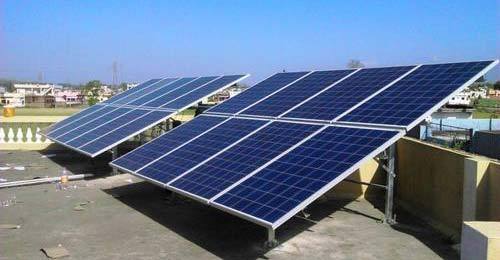


Green Mobility in Action: AMPIN Energy Transition’s Solar Power Project for Hyderabad Metro
As cities expand and transportation networks grow, the need for sustainable solutions becomes more pressing than ever. The Hyderabad Metro, one of India’s most advanced rapid transit systems, took a major step towards renewable energy transition by integrating solar power.
AMPIN Energy Transition, in partnership with L&T Metro Rail Hyderabad, successfully implemented one of the largest behind-the-meter solar projects in India, setting a benchmark for urban transportation sustainability.
AMPIN Energy Transition’s 7.805 MW solar power plant is designed to supply clean energy to Hyderabad Metro’s infrastructure. This large-scale project powers 24 metro stations and two depots, reducing reliance on conventional power sources and significantly cutting down carbon emissions.
One of the standout features of this initiative by the top renewable energy company is the integration of solar-powered car parking, an innovative approach that optimises space while maximising solar energy generation.
The shift to solar energy is not just about cost savings, but also about a crucial role in reducing the environmental impact of urban transport systems. Here’s how this project contributes to Hyderabad Metro’s sustainability goals:
By using solar energy to meet a substantial portion of its energy demand, Hyderabad Metro is actively reducing its carbon footprint and setting an example for other transit systems.
Executing a large-scale solar project in a fully operational metro system is a complex task. One of the primary challenges was working within operational metro stations, where safety and passenger convenience are top priorities. To address this, AMPIN Energy Transition and L&T Metro Rail Hyderabad developed a strategy that involved working only during non-operational hours, primarily at night.
This required meticulous planning, skilled labor, and precision engineering to ensure that installation and maintenance activities did not disrupt metro services. Despite these challenges, the project was completed successfully, demonstrating its ability to execute complex renewable energy solutions in urban environments.
The Hyderabad Metro solar power project incorporates cutting-edge solar technology to optimise energy generation. Some of the key advancements include:
These technological innovations not only improve energy output but also ensure the longevity and reliability of the system.
The Hyderabad Metro solar project is not just a milestone for AMPIN Energy Transition but also a blueprint for future metro systems across India. It proves that renewable energy solutions can be effectively integrated into urban transport networks without disrupting operations.
This initiative aligns with India’s larger renewable energy targets and provides a scalable model for other cities looking to embrace sustainable public transport. As metro networks expand in cities like Bengaluru, Chennai, and Pune, similar solar-powered initiatives can help reduce urban emissions and drive the country towards a greener future.
Apart from the environmental impact, this project brings several economic and social benefits:
The Hyderabad Metro solar power project is a testament to the potential of clean energy in revolutionising urban transport. By meeting 15% of the metro’s energy needs through solar power and reducing 8,000 MT of carbon emissions annually, this initiative is a major step towards a greener and more sustainable India.
As AMPIN Energy Transition continues to lead the way in renewable energy, this project serves as an inspiration for cities worldwide.
Green mobility is no longer a distant goal, it is already in action, transforming the way we travel, one solar panel at a time.
